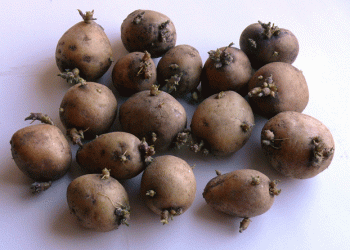Phosphorus in soil is an essential macro-element, required for plant nutrition. It participates in metabolic processes such as photosynthesis, energy transfer and synthesis and breakdown of carbohydrates.
Phosphorus is found in the soil in organic compounds and in minerals. Nevertheless, the amount of readily available phosphorus is very low compared with the total amount of phosphorus in the soil. Therefore, in many cases phosphorus fertilizers should be applied in order to meet crop requirements.
THE REACTIONS OF PHOSPHORUS IN SOIL
Phosphorus is found in soils both in an organic form and an un-organic (mineral) form and its solubility in soil is low. There is equilibrium between solid phase phosphorus in soil and the phosphorus in the soil solution. Plants can only take up phosphorus dissolved in the soil solution, and since most of the soil phosphorus exists in stable chemical compounds, only a small amount of phosphorus is available to the plant at any given time.
When plant roots remove phosphorus from the soil solution, some of the phosphorus adsorbed to the solid phase is released into the soil solution in order to maintain equilibrium. The types of phosphorus compounds that exist in the soil are mostly determined by soil pH and by the type and amount of minerals in the soil. Mineral compounds of phosphorus usually contain aluminum, iron, manganese and calcium.
In acidic soils phosphorus tends to react with aluminum, iron and manganese, while in alkaline soils the dominant fixation is with calcium. The optimal pH range for maximum phosphorus availability is 6.0-7.0. In many soils decomposition of organic material and crop residue contributes to available phosphorus in the soil.
PHOSPHORUS UPTAKE BY PLANTS
Plants take up phosphorus from the soil solution as orthophosphate ion: either HPO4-2 or H2PO4-. The proportion in which these two forms are absorbed is determined by the soil pH, when at higher soil pH more HPO4-2 is taken up. The mobility of phosphorus in soil is very limited and therefore, plant roots can take up phosphorus only from their immediate surroundings.
Since concentration of phosphorus in the soil solution is low, plants use mostly active uptake against the concentration gradient (i.e. concentration of phosphorus is higher in the roots compared with the soil solution). Active uptake is an energy consuming process, so conditions that inhibit root activity, such as low temperatures, excess of water etc., inhibit phosphorus uptake as well.
PHOSPHORUS IN SOIL DEFICIENCY
Symptoms of phosphorus deficiency include stunted growth and dark purple color of older leaves, inhibition of flowering and root system development. In most plants these symptoms will appear when phosphorus concentration in the leaves is below 0.2%.
PHOSPHORUS IN EXCESS
Excess of phosphorus mostly interferes with uptake of other elements, such as iron, manganese and zinc. Over-fertilization with phosphorus is common and many growers apply unnecessarily high amounts of phosphorus fertilizers, especially when compound NPK fertilizers are used or when irrigation water is acidified using phosphoric acid.
PHOSPHORUS IN NUTRIENT SOLUTIONS AND SOILLESS MEDIA
The acceptable concentration of phosphorus in nutrient solutions is 30-50 ppm, even though it was found that it can be reduced to 10-20 ppm. In nutrient solutions that flow continuously the concentration can be as low as 1-2 ppm.
In soilless media, much like in soil, phosphorus accumulates with each phosphorus addition, and minerals of phosphorus and calcium or magnesium start to precipitate. The types of minerals that are formed depend on the pH of the media.
TESTING PHOSPHORUS IN SOIL
Phosphorus soil test level gives a measure of the capacity of the soil to supply phosphorus to the soil solution. The soil test does not measure the total amount of phosphorus in the soil, because the available amount of phosphorus is much less than the total amount. It also does not measure the phosphorus in the soil solution, because the amount of phosphorus in the soil solution is usually very low and does not represent appropriately the amount of phosphorus that plants can potentially absorb during the growing season.
Phosphorus soil test is actually an index that helps predict the fertilizer requirement of the crop. The recommendations for fertilizer application are determined based on many field tests in many soils and crops. Different testing methods result in different values, which have to be interpreted accordingly. For example, a result of 25 ppm phosphorus obtained with “Olsen” testing method, may have a different interpretation than the same result obtained with “Bray” testing method.
But confusion doesn’t end here – different labs that use the same testing method can determine different interpretations for the same values. Taking the soil sample correctly is very important for reaching results that truly represent the level of available phosphorus. For example:
- Soil sampling depth – Since phosphorus is not mobile in soil, samples that are taken from the topsoil will usually indicate higher amount of phosphorus than samples that are taken from the subsoil.
- Fertilizer application methods – Most of the phosphorus applied to soils remains within 1 or 2 inches from the point of application. Therefore, the exact location from which samples are taken can affect the result considerably.







